
Size: 1000 pieces
Available for purchase on eBay
Dimensions: 47.7 cm x 67.7 cm
Manufacturer: Clementoni, Art. 39111
Artist:
Alchemy Carta, England
Box: photo
Tag: book
Book: Beyond the Rainbow Bridge, by Barbara J. Patterson and Pamela Bradley
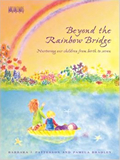 Title: Beyond the Rainbow Bridge: Nurturing our children from birth to seven
Title: Beyond the Rainbow Bridge: Nurturing our children from birth to seven
Author: Barbara J. Patterson and Pamela Bradley
Source: borrowed from a friend
ISBN: 0-9647832-3-1
Available online
This is a wonderfully down-to-earth book discussing the Waldorf philosophy of education based on the anthroposophy writings of Rudolf Steiner. It talks about the subject matter in an accessible way, focusing on key concepts and examples, and including direct dialogue with parents.
The writer makes an important point that we, as parents, must grow in order to meet the needs of our children. We need to constantly evolve to discover and explore our potential, in order to help our children to do the same.
The key needs of rhythm and warmth in the child’s life are noted, and expanded into the discussion of 12 human senses identified by Steiner: the Will senses (or physical senses, directed at own physical body) of touch, life, movement, and balance; the Feeling senses (or soul senses, relating the person to the world) of smell, taste, sight, and warmth; and the Cognitive senses (or spiritual/social senses that are directed inward): hearing, speech, another’s thought, and another’s “I”.
The author talks about stages of development and corresponding trends in creative play and discusses strategies to support children’s creative play and to provide experiences with water, air, earth, and fire. She talks about the traditional Waldorf toys for different ages and provides instructions on how to make them.
Several creative discipline approaches are discussed:
- exhibiting the traits and behavioural patterns you would like your child to learn;
- straightening out things in the child’s environment to “reform” their space, thus adding consistency and order into the child’s universe;
- giving unambiguous messages and simplifying and limiting the choices;
- using the word “may” instead of a command or question: “you may now wash your hands” instead of “do you want to wash your hands?” or “go wash your hands”, without adding “OK?” at the end;
- utilizing routines to foster the sense of rhythm;
- providing opportunities for useful work, such as garden help, kitchen help, and physical exercise;
- listening to the child attentively and providing a logical solution to a conflicting situation;
- stepping back to allow for self-expression and questioning of the rules;
- speaking positive, encouraging words;
- showing unconditional love.
At the end of the book, there are resources for additional reading, suggestions for age-appropriate fairy tales to tell or read to children, instructions on how to finger knit, short rhymes describing the routines of the day, rainbow bridge birthday stories that can be customized to be relevant to a particular child and told to them on their birthday, and description of various stages of Waldorf education.
I kept feeling the overwhelming sense of peace as I was reading this book. It speaks of gentle parenting, attention to the needs and developmental stages of the child, providing the appropriate environments to foster creativity, exploration, and discipline, and practical ways to accomplish it, with parent/teacher discussions at the end of each chapter. It feels like a steady rock in the ever-changing sea of parenting.
Book: The functions of the orgasms, by Michel Odent
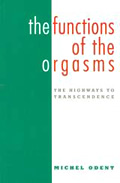 Title: The functions of the orgasms: The highways to transcendence
Title: The functions of the orgasms: The highways to transcendence
Author: Michel Odent
Source: Veddma library
ISBN: 978-1-905177-18-9
Available online
In this book, the French obstetrician Michel Odent discusses the importance of the “cocktails of love hormones” present during sex, birth, and breastfeeding and the effects of “scientification of love”: interference with those hormones created by birth interventions, anesthesiology, and pharmacology. One of the key questions the author poses is “How long will the human race be able to survive without love?”
The author discusses three types of climaxes (“ladders” in Greek) in human sexual life: sexual orgasm, the fetus ejection reflex that is present during natural birth, and the milk ejection reflex that is central to breastfeeding. He discusses similarities of the different types of climaxes as well as the similarities between orgasmic states and other ecstatic states.
Any orgasmic state can be interrupted, which is what frequently happens in the current medical system of birth management, triggering adrenaline-oxytocin antagonism. This comes from the lack of understanding of birth physiology by the medical establishment and results in additional interventions required for the baby to be born. The labouring woman “needs to feel secure, without being observed, in a place that is sufficiently warm”. Failure to provide the appropriate environment for labour interferes with fetus ejection reflex.
The real climax in labour is reached when the mother is bonding with the baby, right after birth. This is often interrupted by the perceived need for activity around the baby: noise, separation of the baby from the mother, measurements, and disregard of mother’s need for privacy. Oxytocin – the hormone central to pleasure and bonding – is known as “shy hormone”. Little is understood of the ecstatic state associated with childbirth, as it is best achieved when the woman is not being observed or interrupted.
From a biological standpoint, only two players are needed during the birth: the mother and the baby. The presence of the third person who assists/”delivers” the baby is not a basic need. There is a myriad of invasive perinatal beliefs and rituals in many cultures, many of which result in socialization of birth and interference in mother-baby bonding in the immediate postpartum.
Throughout history, birth was largely influenced by shamanic and religious traditions, yet often indirectly. Socialization of birth has brought it under the control of a male-centric institution, which instead of focusing on women’s need in labour concerns itself with elimination of pain and fear. Local birth initiatives have been attempting to bring the focus back where it belongs: on the needs of the woman.
The author discusses differences and similarities of male and female orgasms and the hormones that rule them: oxytocin, natural morphines, adrenaline, and other “informational substances”. The effects of these hormones have been studied, including research using brain imaging.
Michael Odent explores the orgasmic/ecstatic states as paths to transcendence, from the Epic of Gilgamesh to present day’s emerging awareness of transcendent sex. Sexuality has been highly controlled via cultural means, such as female and male genital mutilation (infibulation, clitoridectomy, circumcision, castration), arranged marriages, treating a wife as property, repression of adolescent sexual drive, sexual taboos, repercussions for virginity loss in women before marriage, discouragement of extramarital affairs, and so on. This has had a stifling effects on exploration and understanding of natural paths to transcendence. Falling in love has been treated as pathological (expressed by such terms as “madly in love”, “love foolishness”, etc.). Mystical emotions have been associated with celibacy and virginity. Infatuation presents a challenge to institutionalized control, as it has unpredictable timing and irrational expression. Falling in love is still a complex scientific topic in need of further study.
As oxytocin is released during breastfeeding, the “milky way” is another pathway to transcendence to be explored. Cultural milieus interfere with this pathway as well, from denying the baby colostrum (by claiming it “dirty” or requiring a permission of a male relative for the mother to breastfeed the baby, or denying breastfeeding before baptism at age 2-3 days), to social taboos around breastfeeding in public or breastfeeding for longer than an arbitrarily designated period of time. Religious taboos existed for intercourse during the lactation period, often putting women under pressure to stop breastfeeding in order to resume their “marriage duties”. Institutionalized medicine interfered through labour interventions, interruption of bonding time, incessant nead to “measure” how much milk is going into the baby, and thus often encouraging or necessitating feeding with artificial milk.
The author believes that instead of promoting breastfeeding, we should be focusing on why breastfeeding is difficult, he suggests to question: “How does the capacity to breastfeed develop?” and seeing how we are interfering with it.
The comparison in male and female sexuality thus reveals that while men have only the genital ladder to explore, women additionally have access to the birth ladder and the “milky way”. Research shows that women are physiologically better equipped than men to reach high intensity genital orgasms. The author delves into the physiological differences that explain this phenomenon.
The following discussion of the highways to transcendence is fascinating. The ecstatic states need ability to escape from space and time reality (which explains the “labourland”). The author touches upon transcendent emotional states and hard-wired emotional states, re-thinking the common beliefs about human sexuality, and his new vision of birth environment. He looks at the connection of culturally controlled sexuality and culturally controlled childbirth to culturally controlled pathways to transcendence.
There is a short entertaining review of legendary orgasms, and two scenarios of the future of love: a pessimistic one based on our interference with sexuality, birth, and breastfeeding, and an optimistic one which necessitates evaluation of practices of obstetrics and midwifery, quality and duration of breastfeeding, and reversing the current cultural conditioning. This includes changing the language we use to describe sex and birth. We do, however, have to work within the current system and steer it “towards the light”, as it cannot be changed overnight.
The epilogue is a tongue-in-cheek letter for a wedding night preparation, describing all the details that would need to be perfect in order for the night to go well. It mimics a birth plan, and discusses timings, place, need for privacy, the presence of other “helpers” and so on. It shows how ridiculous it is to need to specify such things for a sexual encounter, yet the current system interferes with birth so much that women need to state such obvious requirements as the need for privacy in labour, lest it be ignored.
I would highly recommend this book – it explores the ideas rarely brought to light and touches on ultimately the most important questions of human purpose and capacity to love.
Book: Beyond the Sling, by Mayim Bialik
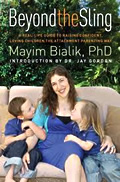 Title: Beyond the Sling – A real-life guide to raising confident, loving children the attachment parenting way
Title: Beyond the Sling – A real-life guide to raising confident, loving children the attachment parenting way
Author: Mayim Bialik
Source: Veddma library
ISBN: 978-1-4516-1800-6
Available online
This book outlines main tenets of attachment parenting and presents the reader with practical examples from the author’s personal experiences, as well as that of her friends. The author has a PhD in neuroscience, works as an actress, and her husband is their two children’s caregiver while she is working.
The book discusses trusting your parenting instincts and learning to filter other people’s input, finding your own parenting style. Some of the good suggestions include learning to smile at annoying people, having realistic expectations, taking it slow, and rethinking your priorities. It follows with the chapters addressing needs of the baby, focusing on gentle unmedicated birth, breastfeeding, holding and babywearing (with discussion of some specific carriers), co-sleeping and night-time parenting, and potty training, including elimination communication.
The discussion is continued with the things baby does not need, such as the plethora of baby products, unnecessary medical interventions, pressure to excel in academics or sports, and wraps up by discussion of discipline measures and the advantages of gentle discipline. The author covers issues such as politeness, willingness to share, peer pressure, and media exposure, as well as corporal punishment’s shortcomings, illogical consequences, name-calling, time-outs, threats and rewards, and authoritarian approach to discipline.
The author’s views are largely experience-based, and even when referring to research, she does not go into it in depth. This makes for an easy-to-read introductory narrative, yet the book does not focus on providing evidence – the spotlight is more on logical choices based on human psychology and common sense. There is, however, a brief overview of the physiological factors that influence child development. This book would be good to read while pregnant, it is non-judgemental and discusses many of the childbearing and parenting realities, even if often through a lens of one woman’s experience.
The book ends with some thoughts on re-thinking your existing friendships, keeping the relationship with your partner strong throughout childrearing years, and balancing work and family. Some of the views and examples are relevant more to women who have a very active social life in a big city, prior to having children, including frequent meals out, shopping trips, and parties, yet many aspects of changing relationships are relevant no matter the parents’ former level of social involvement.
Overall, this book is straightforward and full of examples, making it a good read for someone being newly introduced to the concepts of attachment parenting.
Book: Birth & Sex, by Sheila Kitzinger
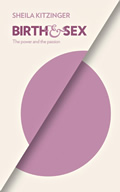 Title: Birth & Sex: The power and the passion
Title: Birth & Sex: The power and the passion
Author: Sheila Kitzinger
Source: Veddma library
ISBN: 978-1-78066-050-9
Available online
Notes: Sheila Kitzinger, a social anthropologist of birth, an author of 36 books published internationally, brings attention to the continuity of sexuality through procreational stages, including conception, pregnancy, and birth. One of the central themes in the book is de-sexing of birth that has stemmed from the obstetric practices and the perpetuated culture of fear surrounding birth. This trend leaves women full of fear of birth and inability to perceive it as an empowering act.
The author draws parallels between the need for privacy during both sex and birth, the similar hormonal cocktails for both, and brings up a possibility of orgasmic birth when a birthing woman is given the freedom to birth as she wishes and when she embraces the power carrying her through labour.
She quotes Barbara Katz Rothman on separatory approach in obstetrics:
“The history of Western obstetrics is the history of technologies of separation. We’ve separated milk from breasts, mothers from babies, fetuses from pregnancies, sexuality from procreation, pregnancy from motherhood. And finally we’re left with the image of the fetus as a free-floating being alone, analogous to man in space, with the umbilical cord tethering the placental ship, and the mother reduced to the empty space that surrounds it.”
This separation is perpetuated by the medical education, obstetric practice, and images in the media. Everything in a hospital setting is designed to create an impersonal atmosphere separating the figures of authority acting upon a woman’s body from the body itself that is treated as a reproductive machine. The author describes a typical hospital delivery during 1960s: “The obstetric delivery is a caricature of normal childbirth. Not only were the woman’s legs suspended in stirrups but her wrists too were often bound. Her body became the passive object on which the doctor acted to effect delivery. She lay flat on her back while he got on with the job at the lower end of her body. Her perineum was shaved as bald as an egg and the medical view of her was a heavily draped, lumpy object, like a sofa shrouded in dust covers, and a central window in the cloth with an opening in which the ball-shaped mass of the fetal head could be seen descending through the smooth, shiny, bulging balloon of the perineum. It appeared that the doctor was no longer doing things to a woman’s body, but was servicing a reproductive machine.” Even without the woman being bound and shaved, the current obstetric view of the birthing woman and the birthing process are not far from those described.
The author gives an overview of female physiology, hormones that play a role in childbirth, psychological and physiological changes in pregnancy, and the varying feelings women have about sex after birth. She discusses how birth process is disrupted in hospitals, including episiotomy, the origins of the clock-dominated birth based on the Friedmann curve to describe the “appropriate” labour progress, as well as the emergence of active management of labour instead of letting the labour progress on its own.
She describes the influence of the language used to describe the birth process on our perceptions of what is normal and expected during labour and birth: “When doctors and midwives describe pregnancy as ‘high risk’, a pelvis as ‘untried’ or ‘inadequate’, a cervix ‘incompetent’ or labour ‘prolonged’, talk about ‘failure to progress’ – and make casual comments about a ‘lazy uterus’, a ‘sloppy cervix’, or a ‘boggy fundus’, they impose a view of the female body as a machine always at risk of breaking down.” Language is extremely powerful at cementing our perception of a phenomenon as well as our attitude towards it. In birth, such language leads the medical system and the society to treat pregnant women as sick, their bodies inherently flawed, needing help delivering them from the intruder that the fetus is presumed to be, as well as from the pain of childbirth.
The power differential between the medical professionals and the birthing women in a hospital setting, combined with the cavalier approach to medical interventions in labour, results in some women viewing what happened to them in labour as birth rape. “They spoke about shame and disgust with themselves and their bodies, about guilt that they had in some way caused the violence, and how they felt different from other women, and isolated. They were haunted by similar images of being trapped, overpowered, physically assaulted and mutilated, and had flashbacks, nightmares and panic attacks.” Birth trauma stays with women for years, often surfacing as psychological issues that affect their family life, parenting, relationships, and work.
The author describes the introduction of the birth pools by Dr. Michel Odent in 1970s in France, creating the possibility of labour and birth in water. Dr. Odent has also introduced singing into his clinic: pregnant women, families, and some members of staff joined in singing together during antenatal clinic visits. Pregnancy and birth songs have been an important part of the ritual through the ages, but unlike the birth pools, singing had not taken off as a part of a modern hospital routine, perhaps due to logistical issues, one of which would be breaking down the rigid separation between the staff members and the birthing families, and requiring more flexible protocols that clash with the conveyor-like operation of a hospital. The book touches on the importance of birth dance, ritual songs, and unrestricted movement during birth in different cultures.
The significant changes in childbirth in the last half a century include the change of the place of birth from home to hospital bringing with it the medicalization of birth; shifting the control over what happens in labour from a midwife to an obstetrician; and technological revolution bringing with it the investigations and interventions starting early on in pregnancy. The author also discusses the re-emergence of home birth as a way to get away from all the interventions promoted in a hospital setting, and the roles of midwifes and doulas, including the struggles within birth professionals in different countries. She touches on midwife witch hunts taking place in some countries, and how risk management in obstetrics dictates more interventions, including early induction, Caesarean for breech, and planned Caesarean sections in general.
I have thoroughly enjoyed this book. The author touches on many issues affecting birth today, some widely discussed within the birthing community, and some not so well-known. Her insight on history of birth interventions and on removing sexual aspect from birth, as well as on societal impacts of the changes in birth process makes the book an enlightening read.
Book: Connected Parenting, by Jennifer Kolari
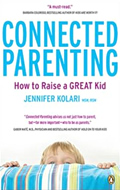
Title: Connected Parenting: How to Raise a GREAT Kid
Author: Jennifer Kolari
Source: Veddma library
ISBN: 978-0-14-316877-5
Available online
Notes: The author stresses that empathy is the key to raising a child.
The formula to correct a child’s behaviour is:
1) Mirror to show you understand the child’s feelings.
2) Present a disciplinary problem and explain why the behaviour is unacceptable.
3) Find a solution by either suggesting a course of action or imposing a consequence.
She introduces the CALM acronym for her parenting strategy:
Connect – show undivided attention.
Affect – genuinely match the child’s tone of voice, body language, facial expression.
Listen – listen attentively and carefully to the exact words the child is using.
Mirror – bring it all together.
Sometimes if the relationship has been deteriorating for a long time, you first have to repair the bond with the child. This can be done via baby play (playing with the child as if they are a baby again), parenting together with your partner or other family members, being sincere even when you have to admin you were wrong, and remembering that it is never too late to repair the relationship.
To keep the child happy and well-behaved, spend time with the child (just like you would if you wanted to maintain any other relationship): play with the child regularly, give them all your attention, catch them when they are being good and commend their achievement, try not to say “later” too much: it does not take long to bring your child to a happy place.
To set appropriate limits which every child needs, you must find a medium between an all-permissive and an all-forbidding approach. All children need limits, otherwise the world is too uncertain for them, and they do not want to be in charge. Do not be embarrassed by the child misbehaving in public and do not ignore it or the behaviour will escalate. Address the issue and remove the child from the situation if necessary.
Say what you mean and mean what you say. If you promised the child a consequence for a specific action, you must enforce the consequence if the child chooses to perform the action. This means that the consequence should be the one you are willing and able to enforce. Setting limits prepares children for life: if they know what the appropriate behaviour in the situation is, they feel more in control and can make better decisions.
Get familiar with your own limits and triggers, and monitor your own stress level so you do not overreact. Decide on the behaviour’s category: is it a red-light behaviour (absolutely unacceptable, endangering life or health), green-light behaviour (nothing earth-shattering), or yellow-light behaviour (something that is ok in exceptional circumstances). Familiarize your child with the system, and explain that red-light behaviours will not be tolerated, and yellow-light behaviours can be ok only once in a while, upon your permission). That way the child knows the limits before they overstep them.
The author mentions front-loading and intervention as two strategies for containment. Front-load: let your child know what to expect, know when the situation is going to be tough to handle for a child (such as sitting still for 2 hours at a restaurant) and plan in advance to mitigate the situation. For multiple children, present the concepts of “friendship moves” (statements or actions encouraging friendship) versus “friendship blocks” (statements or actions hurting feelings and deteriorating friendship). Explain that you expect them to perform friendship moves toward each other. Acknowledge and encourage instead of threatening or bribing.
Intervention involves planning for the worst: you explain the exact situation and consequences to the children up-front and if they do not do what you require, you carry through with the consequence. If that means leaving the restaurant in the middle of dinner without letting kids enjoy food or dessert, then that is what you do in case they go against what you have requested them to do. This provides the child with a lesson to be learned, and next time they will know you mean what you say and you are prepared to go through with the consequence.
The author suggests different approaches to intervention: cure the bad behaviour with kindness, laughter, imaginary play, and cuddling – a child who feels loved will be more likely to listen to you. If a child throws a tantrum and does not react to calming techniques, allow them to continue the tantrum in a safe space and without an audience. That will likely make it boring and the child will stop. Play an adrenaline-releasing game (chasing, hiding, tumbling) to let the child discharge their excess energy and release their emotions. Making an observation and walking away instead of saying “no” leaves the child to think about the situation and make their own decision. For younger children distraction is a good technique. If one technique does not work, try another. What did not work today might work tomorrow.
The book goes into details of special situations (homework, bathroom routines, getting dressed), modifying the mirroring techniques for special-needs children, and troubleshooting common problems.
Overall a good book on parenting coming from a place of compassion, understanding, and setting limits. It contains lots of examples of specific situations and ways dialogues with children develop, and presents possible solutions.
Book: Food Rules: An Eater’s Manual, by Michael Pollan
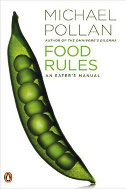
Title: Food Rules: An Eater’s Manual
Author: Michal Pollan
Source: Veddma library
ISBN: 978-0-14-311638-7
Available online
Notes: Michael Pollan argues that any traditional diet is better than what has “evolved” to be the Western diet, high in “edible foodlike substances” and lacking real foods. Most of the research has been described in other books of his, such as “Omnivore’s Dilemma”, whereas this book is a collection of “food rules”, expanding Michael Pollan’s directive of “Eat food. Not too much. Mostly plants.”. The book consists of 3 parts, each part providing ways to step away from the Western diet. The first part covers more obviuos tips on eating real food and removing processed foods from one’s diet. The second part goes a little deeper into what makes for good food (grown in rich soil, unprocessed, perishable, etc.). The third part provides tips on limiting portions.
The author addresses a few “old wives tales” that correspond to scientific findings, although he does admit that the nutritional science is way too young to clearly define best nutritional components. However, he argues that certain things are very clear from reviewing the research done until now. Most of them are plain and somewhat obvious, but adhering to them would lead one to a better relationship with food. This in contrast with trying to find one “evil” ingredient in modern diets so that processed food industry can adjust for that one ingredient (say, fat) by compensating with other unhealthy ingredients (say, sugar) and declare their products nutritious.
Here are a few tips I found worth noting (combining some similar ones):
- Do not eat anything that contains unpronounceable ingredients, anything your great-grandmother wouldn’t recognize as food, anything with more than 5 ingredients, or where one of the top 3 ingredients is some form of sugar (no matter if it’s high fructose corn syrup, aspartame, cane sugar, fructose, or something else)
- Avoid food products that use words like “low fat”, “non-fat”, “lite”, or make health claims: only large food processing corporations have such an advertising budget – produce has no health claims
- Avoid imitation foods or most foods advertised on TV
- Shop at a farmer’s market, buy food that will eventually rot
- Eat only foods cooked by humans, and not in a facility where everyone must wear a surgical cap
- It is not food if it arrives through the window of your car or if it has the same name in every language
- Eat mostly plants, in a variety of colours (each colour signals different phytochemicals the combination of which is optimal), drink the water the vegetables were boiled in
- Treat meat as a special occasion food (I’m not sure I agree on this one) – use it sparingly, eat animals that themselves have eaten well, eat wild foods and oily little fishes (mackerel, sardines, anchovies)
- Eat well-grown food from a healthy soil, grow food yourself, try new species of food (plant and animal)
- Buy in bulk on sale in season and store food in a freezer
- Eat fermented foods (kefir, real soy sauce, kimchi, yogurt, sauerkraut, and sourdough bread)
- Eat sweet foods as found in nature, sweeten and salt food for yourself
- Eat oils and breads than have traditionally been stone-ground, avoid white breads
- Treat treats as special occasion food, eat junk food only if you make it yourself (that tends to limit junk food consumption since its preparation is very time-consuming)
- Eat a traditional diet, have a glass of wine with dinner
- Pay more eat less, stop before you are full, eat when hungry, eat slowly
- First bite is better than each subsequent one
- Take as much time to eat the meal as it took to cook it
- Use smaller containers and don’t go back for seconds
- Eat most of the food at breakfast, less at lunch, and least at dinner (this one really bothers me: most of us who are working don’t have time for a long breakfast or lunch, and many people, including Michael Pollan, sing the praise to family meals, which for most of us is dinner – so we are supposed to eat very little at a meal when everyone finally gets together at the family table, and for which meal there is actually some time to prepare?)
- Eat meals, limit snacks, if eating not at table snack on vegetables of fruit
- Don’t eat where your car gets your fuel (I really like this one – gas stations do not sell real food)
- Leave something on your plate (I don’t agree with this one either: just don’t put things on your plate that you are not planning to eat. Wasting food is not a good solution.)
- Cook, as then you have the most control over what goes into your food
Overall a good read full of common sense, and certainly a nice break from the dogmatic nutritional advice that is assaulting us from every direction these days.
Puzzle: Reverie, 1897 by Alphonse Marie Mucha
Size: 1000 pieces
Dimensions: 50.65 cm x 67.94 cm
Artist: Alphonse Marie Mucha
Painting: F. Champenois Imprimeur-Éditeur
Producer: Mega Puzzles, Vintage series, 2011, No. 50620ABJ
Puzzle: Just like another puzzle from the same series by Alphonse Mucha, this puzzle is not a quick one to do, but very pleasant in lingering on the intricate details of the ornaments. Good places to start are the face, hair, décolletage, the top detail of the dress, the book outline, and the pattern going down the middle of the dress. The black and white curves, the orange and pink flowers, and the rest of the large background ornament can follow. The hand and the white of the sleeves, as well as the red and white of the book can come next. The rest of the dress is more challenging due to non-contrasting variations of colour.
Notes: The printing business here advertised, F. Champenois, was also used by Mucha for some of his prints for other clients. [Wiki]
Book: Birth Matters: a midwife’s manifesta, by Ina May Gaskin
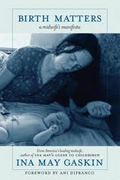
Title: Birth Matters: a midwife’s manifesta
Author: Ina May Gaskin
Source: Veddma library
ISBN: 978-1-58322-927-9
Available online
Notes: As always, Ina May does not disappoint. This book brings forth a deep discussion of the importance of birth in lives of children being born, mothers giving birth, and families. It talks about demonization the midwifery profession has received with the rise of male-driven obstetrics and an unbending medical system with monetary goals at its forefront. It calls all of us to grasp the scale of maternal and infant mortality, and help lower it by instituting standardized reporting on causes and circumstances of birth-related deaths.
Ina May calls to feminists not interested in motherhood, who have distanced themselves from maternal health issues, to consider that the right of a woman to have a safe birth is as important as the right to choose whether to have children. “We need to deepen our understanding of where we have been as women in the past and how the past has shaped and often distorted our knowledge of our bodies and ourselves, especially in the realm of pregnancy and birth.” “The way a culture treats women in birth is a good indicator of how well women and their contributions to society are valued and honored.”
The book is full of research findings and statistics on birth matters: C-section rates (90-95% in Brazil, for instance, contrasted by about 30% in US, versus 10-15% maximum recommended by the World Health Organization, and 2-3% as reported by some communities with births assisted by midwives); maternal mortality (US has worse maternal death rates than Cuba, Bulgaria, Hungary); history of introduction of certain “labour-assisting” drugs and medical procedures which have proven to cause numerous complications, but are still being taught in medical schools and applied in the field; – this book is a wealth of information.
There are fewer birth stories in this book than in the “Spiritual Midwifery” or the “Ina May’s Guide to Childbirth“, since the emphasis of this book is on research. However, there are numerous examples illustrating the ability of the female body to labour and birth without interventions. Ina May does touch on the importance of birth stories: without them women do not know what a normal birth is, and are often subjected to unnecessary interventions that are likely to lead to unneeded surgery and birth trauma. The media portrayals of birth as almost always an emergency that requires being rushed to a hospital and attended upon by a team of doctors, who apply all imaginable instruments and techniques (forcepts, vacuum, scalpels, monitors, epidurals, episiotomies, drugs) to save the woman’s life and extract the baby, lead to families being scared of birth, believing that women are unable to birth unassisted, and they end up undergoing similar experiences. Birth stories show us the reality of childbirth, the variety of experiences, and make us realize that birth cannot be put on a conveyer (approach that is so pervasive in a hospital setting), bound to a clock, and forced to progress despite the woman’s body, instead of harnessing its abilities to birth without intervention.
Ina May also touches on the principles of the natural birth movement, including normalcy of birth, empowerment and autonomy of the woman, and avoiding unneeded routine procedures. She also covers the principles of humanized birth, in which health professionals work together in harmony to assist the woman in birth while leaving her in control of all decisions.
For those who care about health of the women and babies in their lives, and who wish to dig deeper into the history and research surrounding birth, hospital practices, unneeded interventions, the importance of the midwifery profession, and preservation of the birth-related knowledge, this book will answer many questions and provide references to more resources. I also highly recommend Ina May’s film “Birth Story” about The Farm midwives, which further discusses the development of medicalized birth and the impacts it has on birth outcomes, while showing how one community took birth into their own hands and produced way better outcomes than those of US hospitals.
Book: Book of Longing, by Leonard Cohen
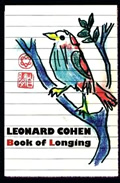
Title: Book of Longing
Author: Leonard Cohen
Source: Veddma library
ISBN: 978-0-7710-2229-6
Available online
Notes: Leonard Cohen has the ability to engulf me in a sweet sadness of “pining for the fjords”. He brings me back to the narrow streets of Montreal in summer, branching out in metal staircases connected to outside of the buildings, intertwined with people’s explorations, discoveries, and grief. The smell of adventure, uncertainty, and possibilities of years past, the introspection on a park bench in early evening. Few poets that write in English can so consistently play my strings. And with knowing motherhood, more words of his reach me.
Mother Asleep
remembering my mother
at a theatre in Athens
thirty
thirty-five years ago
a revue by Theodorakis
those great songs
she fell asleep
in the chair beside mine
in the open-air theatre
she had arrived that day
from Montreal
and the play started
close to midnight
and she slept through
the mandolins
the climbing harmonies
and the great songs
I was young
I hadn’t had my children
I didn’t know how far away
your love could be
I didn’t know
how tired you could get
[Leonard Cohen]
Photo: Book of lost tales, August 29, 2012

Photo: Book of lost tales in leaves, August 29, 2012
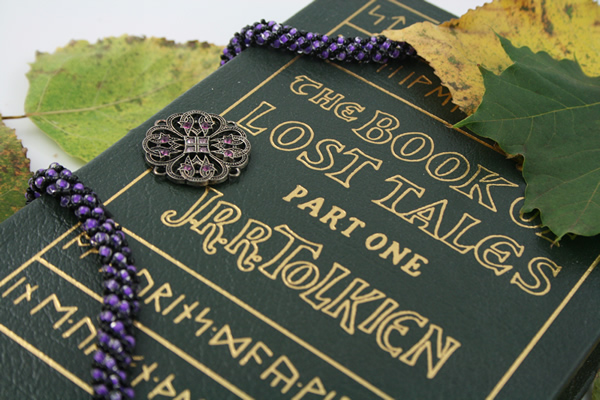
Book: Everything Bad is Good for You, by Steven Johnson
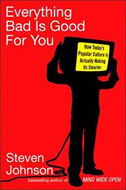
Title: Everything Bad is Good for You
Author: Steven Johnson
Source: Veddma library
ISBN: 1-57322-307-7
Available online
Notes: This book undermines the “well-known fact” that pop culture is getting dumber with time. It does not address the content, but rather the work a human mind has to perform to follow a modern videogame, film, or TV series. And the claim is that the pop culture films and TV shows of today are much more complex than those of yesteryear.
The author introduces the notion of the Sleeper Curve: the notion that “the culture is getting more intellectually demanding, not less”. He notes that usually it is the content, the message, the morale of the story that gets analyzed, causing mass culture to be labelled as dumb, catering to “low instints”, and providing masses with simple pleasures. He does not dispute that point. He instead is interested in how evolving technology, economic reality, and neurological “appetites” of the brain form the mass culture as it is.
Playing a game like GTA or Sim City, he claims, requires a lot more skill, attention, and patience (as opposed to the “instant reward” that outsiders to the game culture associate with playing videogames) than games like Pac-Man did. Specifically the skills of probing (testing the limits of the gaming environment and its rules) and telescoping (such as performing task C in order to get an item to perform task B in order to get access to task A) are important to the gamer’s success all the more with the latest games. The author mentions that saying that videogames improve hand-eye coordination is equivalent that saying that books improve spelling skills. While being correct, these statements only mention one, not the most significant, effect of the particular medium.
Watching TV shows like 24 or The Sopranos and following the social network of the characters involved requires a lot more concentration than following a Dragnet episode. The number of plot lines has also significantly increased over time, whereas the number of “flashing arrows” (hints that identify the important events or people) has decreased. It takes mental effort not only to follow the show while watching an episode, but to construct the social network and the show’s reality afterwards, connecting people, events, motivations, and consequences.
Least Objectionable Programming (during the days of the 3 television networks), targeted at not losing the audience to another less-objectionable program, has been replaced with Most Repeatable Programming, which is achieved by layering the complex meanings, conversation, events, or timelines, aimed at repeated watching of the episode or film. The latter is more important in the age where premieres have given their primary importance to re-runs and releases on DVD. This gives an economic reason to make the shows more complex.
The Internet and computer use introduce the need for the mental ability to probe once more – whether it is learning how to use a new application without a manual, picking things up as you go, multi-tasking, using various means of communication, tracking online social networks, and so on. Analysis of complicated plot lines of TV shows spills over to the fan sites where motivations are analyzed and discussed, episode guides are created, and arguments are carried out. The videogame world is amended with Internet fan sites, chat groups, LAN servers, and walkthroughs. All this usage of various media and connections between them require significant mental efforts, – something that people 30-40 years ago did not need to be entertained by mass culture.
Films are not comparatively as innovative as the TV shows can be, mostly due to the constraints of time: a film only has a time equivalent to a TV series pilot to introduce all the characters and circumstances and bring the plot lines to a logical conclusion. However, some films do push the limits. The author mentions “Magnolia”, “Eternal Sunshine of the Spotless Mind” and a few others, as films whose experimental nature would probably not make them as popular 30-40 years ago as they are today.
The first part of the book describes the different media and discusses the changes happening over time. The second part presents research to support the author’s claim. He talks about the IQ measurements that have steadily risen for the middle range, while test scores have not. All the shortcomings of IQ as a measure of intellect put aside (the author chooses this measure primarily due to presence of the related data), the claim is that the rising complexity of the mass culture is responsible for the rise in IQ level.
He also discusses various videogame-related studies, as well as TV show’s social network mappings and plot line graphs. The author concludes by saying that even though the videogames and TV shows do train the mind to be more effective in pattern recognition, it does not imply that reading or spending time outside is less important. Each activity has its own merits, and it is a matter of combination of a wide range of activities to promote the intellectual development.
I quite liked the book for the less opinionated and more scientifically-based discussion. The author certainly has done his homework to outline and strengthen his claims. It would be great if the book had a better organized structure than several very large run-on-forever chapters.
Book: Фауст, by Johann Wolfgang von Goethe
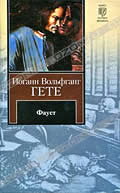 Title: Faust
Title: Faust
Author: Johann Wolfgang von Goethe
Translation: Boris Pasternak
Source: Veddma library
ISBN: 978-5-17-010886-2
Link: http://www.ozon.ru/context/detail/id/1187423/
Notes: I read this story in Russian translation by Boris Pasternak. Sadly my knowledge of German is not nearly as good as would be required to appreciate the original, thus I cannot compare the two.
Faust, frustrated by the limits of human existence and the extent of human knowledge, signs in blood the deal with Mephistopheles (the devil). Their agreement states that Mephistopheles will serve Faust helping him achieve the ultimate human happiness, upon which Faust’s soul shall then become the devil’s.
This version of the Faust story conveys deep despair, breathtaking cruelty, futility, and the fleeting nature of earthly accomplishments, desires, and obstacles. The story of Trojan war is presented from the point of view of the beautiful Elena, unable to settle anywhere with anyone, as the fighting for her destroys any chance of stability in her life. Another woman, Gretchen, is lead astray by Faust, she unknowingly murders her mother to prevent her from interfering in their affair, and given birth to his daughter Gretchen drowns her. Her brother dies protecting her honour, and she is sentenced to death for murdering her daughter.
Greek gods, war, politics, love, and power are all explored in the poem, taking Faust through a plethora of human experiences. The tale is disturbing and depressing, as it exposes the dark unpleasant side of human nature. Faust by Goethe is a great work of poetry, taking the reader along to the depths of soul searching.
Book: The Wonderful Wizard of Oz, by L. Frank Baum
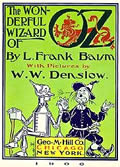 Title: The Wonderful Wizard of Oz
Title: The Wonderful Wizard of Oz
Author: L. Frank Baum
Source: audiobook
Text: http://publicliterature.org/books/wizard_of_oz/1
Audio: http://librivox.org/the-wonderful-wizard-of-oz/
Notes: Being a child, I have read the Russian version of this book (there are 6 books comprising the series based on The Wonderful Wizard of Oz), written by Alexander Volkov, the first of which is almost identical to the L. Frank Baum’s original. I have also enjoyed listening to The Dark Side of the Rainbow (syncing the Pink Floyd’s The Dark Side of the Moon to The Wizard of Oz movie made in 1939). And so I have decided to finally check out the original book.
The most of the characters and events are very similar to the Volkov’s version, with a few exceptions. The main character is called Dorothy (as opposed to Elly) and the good witch of the South is named Glinda (as opposed to Stella), etc. Most of the discrepancies are very minor, and the story is quite enjoyable.
The following exchange made me chuckle. After the description of Dorothy’s home in Kansas as gray: with people, animals, home, and nature outside being dull and gray; she ends up in a colourful country with unique characters. Yet when the Scarecrow says: “I cannot understand why you should wish to leave this beautiful country and go back to the dry, gray place you call Kansas.“, she responds: “That is because you have no brains…“. Um, sure, that’s a reasonable retort. If Dorothy’s conversation partner was an actual person with brains, this statement would be insulting, and moreover not addressing his view at all. She goes on to explain that “No matter how dreary and gray our homes are, we people of flesh and blood would rather live there than in any other country, be it ever so beautiful. There is no place like home.“, which does push through the patriotic message and makes her meaning more clear. However, one can only conclude that nomads and immigrants are not “people of flesh and blood”. Yes, yes, it’s a children’s book and it simplifies the issue. I just wish it was expressed a little less categorical.
Overall, quite a good fairy tale with colourful characters and an engaging plot. The sequels I have read in Russian are also quite good.
Beading: Morning Star bookmark
Book: Naked Lunch, by William Burroughs
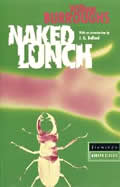
Title: Naked Lunch
Author: William S. Burroughs
Source: Veddma library
ISBN: 0-586-08560-2
Avaialble online
Notes: In the words of the author, “This book spill off the page in all directions, kaleidoscope of vistas, medley of tunes and street noises, farts and riot yipes and the slamming steel shutters of commerce, screams of pain and pathos and screams plain pathic, copulating cats and outraged squawk of the displaced bull head, prophetic mutterings of brujo in nutmeg trances, snapping necks and screaming mandrakes, sigh of orgasm, heroin silent as dawn in the thirsty cells, Radio Cairo screaming like a berserk tobacco auction, and flutes of Ramadan fanning the sick junky like a gentle lush worker in the grey subway dawn feeling with delicate fingers for the green folding crackle…”
Describing the feelings this book brings is hard. Drug-induced semi-connected observations give way to orgies and death, which in turn are replaced with political and medical scenes within the Interzone society, all described with painfully precise language that brings the narration to life. Unpleasant, sickening, curious, brilliant, raw, merciless, and terrifying. Norman Mailer called it “A book of great beauty and maniacally exquisite delight.” It feels like the junk-sick reality is peaking through the brightly illuminated unpleasant, filthy fantasy.
The book is followed by the Appendix that contains a “Letter from a master addict to dangerous drugs”, written by the author and addressed to medical professionals. It details his experiences with various drugs, judges which ones are physically addictive, and reveals his views on the effectiveness of available treatments.
This book is best read when one has time to start and stop reading as they please. As I did not have that luxury, coming back into the midst of a complex thought described with a neglect for grammar rules and punctuation, abundant with slang, all within a non-linear timeline, made it hard to dive back into the narrative. Open mind and thick skin would also be beneficial to the reader.
Book: Аля, Кляксич и другие, by Ирина Токмакова
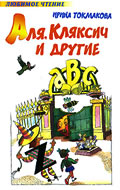 Title: Аля, Кляксич и другие
Title: Аля, Кляксич и другие
Author: Ирина Токмакова
Source: Veddma library
ISBN: 978-5-271-11578-3
Link: http://www.ozon.ru/context/detail/id/3374504/
Notes: This book includes five stories designed to teach pre-school and early-school children Russian alphabet, numbers from 0 to 10, Russian grammar, Russian orthography, and English alphabet. The stories are united by the single protagonist – the girl Alya. In some stories she is accompanied by her friend Anton that is the same age as her.
I remember the Russian alphabet story from childhood – I enjoyed it immensely, which is why I got this book for my library. The other stories are new to me, and I believe the English one was written recently. The stories are bright and full of life and adventure, the dialogue is simple and as I recall very captivating for a child. It would make a good book to read to the children to introduce them to the alphabet. Once they can read, the other stories can broaden their appreciation and understanding of grammar and orthography, all while following a fun story.
Book: Junky, by William S. Burroughs
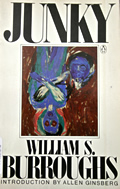
Title: Junky
Author: William S. Burroughs
Source: Veddma library
ISBN: 01400-4351-9
Available online
Notes: This is a book describing junk addiction, junk here being opium and its derivatives (heroin, morphine, codeine, dionine, etc.) The author also touches on the use of cocaine, paregoric, goof balls, weed, and other drugs. The book is about a junky’s life: getting and maintaining a habit, earning money pushing junk or robbing drunks on subway stations, and getting clean. I quite enjoyed the matter-of-fact, sober writing style in which the author talked about the reality of a junk habit and relationships with various characters whose life intersects with the protagonist’s, each one with their own reasons for a habit. Gay culture, “tea users” (those with a marijuana habit), schemes of getting doctors to prescribe morphine, sex workers, copper jitters, and other subjects are all part of the story taking place first in New York, then in New Orleans, and later in Mexico City.
Burroughs explores the question of why one becomes a drug addict and what it takes to form the habit. He says: “I have learned the junk equation. Junk is not, like alcohol or weed, a means to increased enjoyment of life. Junk is not a kick. It is a way of life.”
Book: Rough Guide to Travel with Babies and Young Children, by Fawzia Rasheed de Francisco

Title: Rough Guide to Travel with Babies and Young Children
Author: Fawzia Rasheed de Francisco
Source: Veddma library
ISBN: 9781843537045
Available online
Notes: This is a brief guide that covers preparation for travel, making the journey, being at your destination, and has some notes on specific countries in the “Travel the world” section. The author has travelled to many places with her two sons and she shares tips on bus, airplane, train, and car travel. This includes advice on getting time off school, travelling as a single parent, staying safe, saving money, travelling pregnant, paperwork, packing, entertainment, and so on. The chapter on being there covers various health conditions and ways to deal with them while travelling. The chapter that covers different parts of the world addresses some of the most prominent traditions, dress code, and attitudes that one will encounter.
Overall, this is a lightweight book packed with useful tips. When travelling with children, it would be a good idea to consult this guide in addition to seeking a more detailed guide for the particular location if it is unfamiliar.











